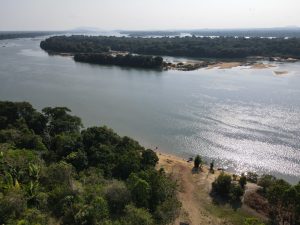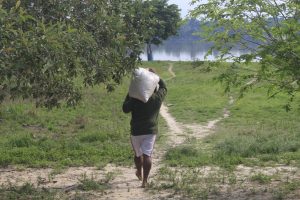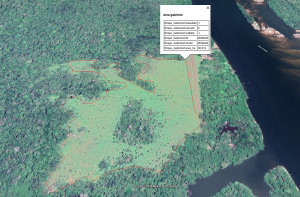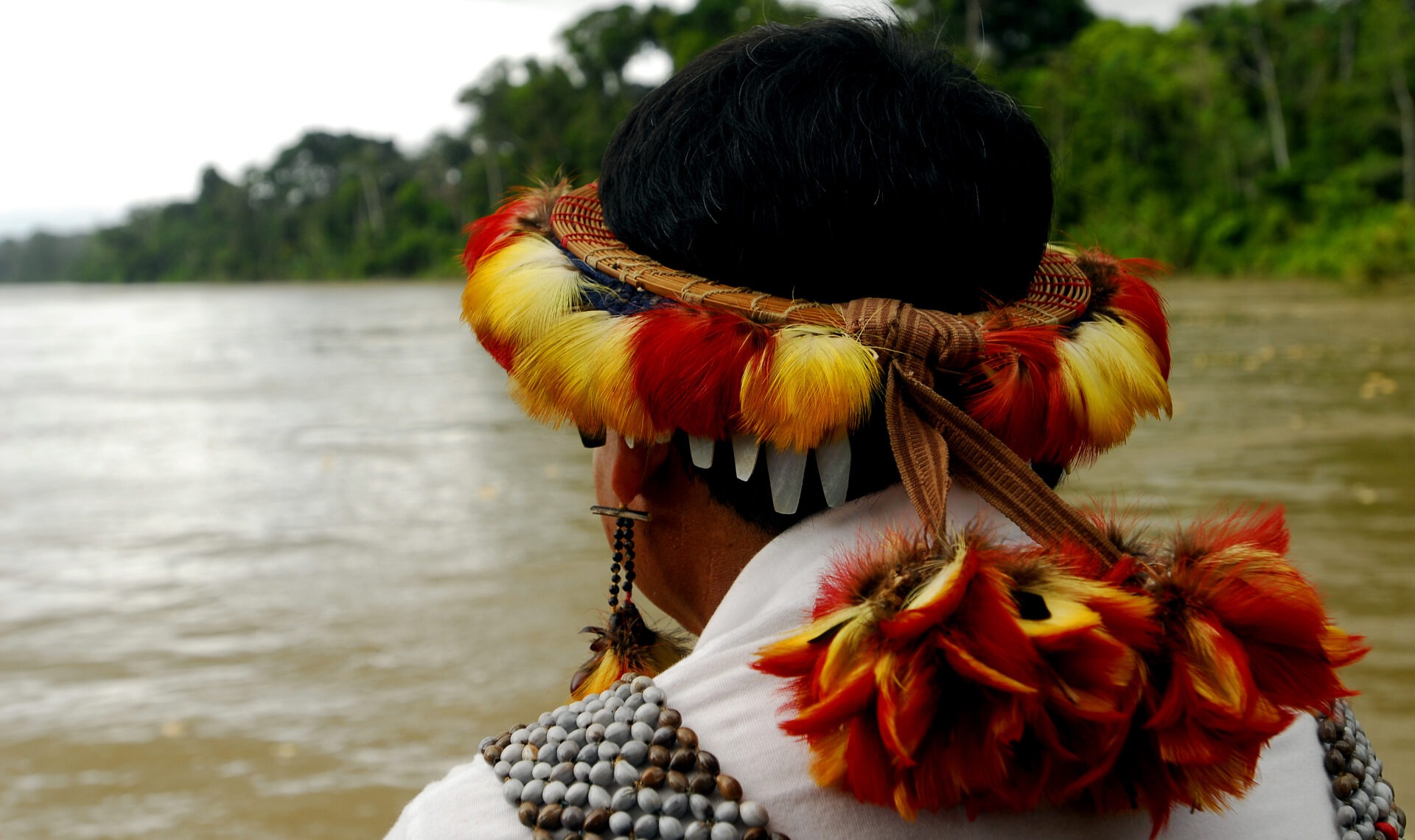In the region known as Terra do Meio, located between two important rivers of the Brazilian Amazon, the Xingu and the Iriri, which stands out for concentrating a great biological and cultural diversity but also for registering some of the highest rates of deforestation and degradation in the Brazilian Amazon, an ecological restoration project is underway on the banks of rivers, springs, and other bodies of water, supported by an economic mechanism of collective incentive aimed at structuring the forest seed chain.
Carried out by the Socio-Environmental Institute (ISA) and coordinated by the National Water and Sanitation Agency (ANA) of Brazil, with the support of the Organization of the Amazon Cooperation Treaty (OTCA), this national intervention aims to ensure the provision of forest ecosystem services through socio-environmental contributions made by indigenous families, riparian communities, and agro-extractivists, based on their traditional knowledge and income generation.
In the project beneficiary area, there are two extractive reserves, Resex Iriri and Resex Xingu, and an indigenous land, TI Cachoeira Seca, which together total 1.5 million hectares and form Terra do Meio. Located in the municipality of Altamira, Terra do Meio is a mosaic of approximately eight million hectares of protected areas.


The Terra do Meio Network
The families participating in the intervention are part of a network for the production and commercialization of non-timber forest products, which directly benefits more than 3,200 people. The Terra do Meio network, which includes 20 associations of indigenous peoples and extractive communities and an infrastructure with 23 product warehouses, 12 canteens, and six mini-processors, contributes to the project with experience and knowledge in generating sustainable income, strengthening the autonomy of communities, defending territories, and accessing the market through associations that value regional flora and associated traditional knowledge.
The seed collectors’ families from the Network will soon start planting forests in priority areas already identified by the project. With training and technical assistance from the Socio-Environmental Institute (ISA), they are taking advantage of the dry season to prepare the soil, aiming to reduce biomass of weeds and invasive plants.

Starting in November, when the rains begin, the seed collector families will directly sow with muvuca, a mixture of native species and green manure, selected and ecologically calculated to create a stratified and dense vegetation that mimics the forest and costs much less than planting with seedlings.


In this first phase of the project, in addition to establishing management agreements with families interested in participating in the restoration of the areas, the first seeds have already been delivered and stored. The process of prospecting, identifying, characterizing, and selecting areas to work on in the first year of intervention has been completed, including the signing of management and maintenance agreements with local associations.
Monitoring and Measurement of Ecosystem Services
In one year, 25 of the 50 hectares of degraded areas planned for intervention will be restored. The monitoring methodology of the restoration areas, developed by ISA, will be implemented 30 days after planting, when a scheduled sequence of periodic evaluations and adaptive management actions will begin. The objective is to guide maintenance actions and assess the development of vegetation to ensure that native cover progresses over time, avoiding the proliferation of invasive species.

The ecosystem services produced by the restoration of the 50 hectares of degraded areas over the two years of the project will be estimated based on tree evapotranspiration and carbon storage and sequestration. Using evaporation data collected by NASA in the Amazon, which indicates that the forest releases 3.6 liters of water per m2 daily into the atmosphere, ISA will be able to estimate the volume of water released into the atmosphere by the trees planted by the intervention project.
To calculate the volume of carbon sequestered in the recovered areas, ISA will use a methodology developed by the Ministry of Science, Technology, and Innovation (MCTI), which calculates CO2 removal by vegetation growth in Indigenous Lands and areas protected by the National System of Nature Conservation Units (SNUC).
The carbon stock will be calculated based on the Global Map of Above-Ground Forest Biomass and parameters suggested by the Intergovernmental Panel on Climate Change (IPCC) for estimating soil carbon.
Strategic Action Program (SAP)
The intervention called Forest Seed Chain: ecological restoration and payments for socio-environmental services in the Xingu Basin is developed within the framework of the Strategic Action Program (SAP) under the Amazon Basin Project (OTCA/PNUMA/GEF).
Adopted in 2017 by the member countries of OTCA (Bolivia, Brazil, Colombia, Ecuador, Peru, Guyana, Suriname, and Venezuela), SAP was developed based on three guiding objectives: 1. strengthening Integrated Water Resources Management (IWRM), 2. institutional adaptation to climate variability and change, and 3. knowledge management.
Its 19 strategic actions are key to promoting collective responses to the rapid degradation of water resources, land, and biodiversity, reinforcing population resilience to the impacts and threats of climate variability, and strengthening the technical capacity of countries for integrated and sustainable water management.
With SAP as the guiding instrument of regional cooperation, the eight countries of OTCA seek to benefit the population and ecosystems of the Amazon Basin on the basis of equitable social, economic, and environmental considerations.
Related news
Post
24 de November de 2025
On October 23 and 24, 2025, the Third Meeting of the Ad Hoc Amazon Water Culture Group (GCA) was held [...]
Post
3 de November de 2025
The Amazon Cooperation Treaty Organization (ACTO) announces a call for specialized technical services to update the Atlas of Hydroclimatic Vulnerability [...]
Post
16 de September de 2025
The Amazon Basin Project has launched an educational video that will be used in community workshops to raise awareness about [...]




